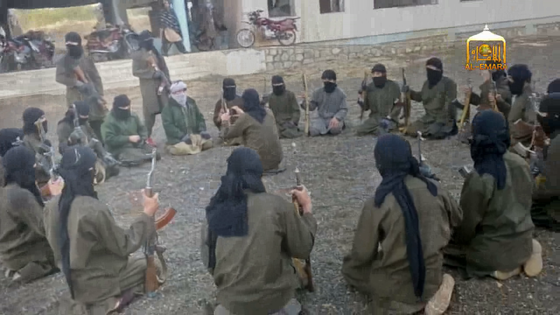Thousands of Taliban fighters attacked Afghan forces in the northern province of Kunduz in an effort to seize control of the provincial capital and outlying districts. Afghan officials have said that several areas of Kunduz are now under the jihadist group’s control.
Taliban forces assaulted the districts of Imam Sahib, Aliabad, and Qala-i-Zal as well as areas in Kunduz city over the weekend. The chief of Kunduz’s provincial council claimed that “about 2,000 heavily-armed insurgents attacked” the district center in Imam Sahib, and that contact with more than 500 Afghan security personnel in the district has been lost, Pajhwok Afghan News reported.
The governor of Kunduz conceded that the Taliban have taken control of several villages and that security forces have abandoned at least three outposts. The governor also claimed that the Taliban organized the offensive with fighters from other Afghan provinces, and six foreign fighters – four Tajiks and two “Chechens” – were among 40 Taliban fighters killed during the fighting, TOLOnews reported.
Security forces are said to have beat back the Taliban assault in Qala-i-Zal district, but fighting is ongoing in Imam Sahib, Aliabad, and the Gor Tepa area in Kunduz city.
The security situation has deteriorated in Kunduz since last year. The head of the provincial council estimated that more than 65 percent of the province is under Taliban control.
The Taliban touted the Kunduz offensive on its official propaganda website, Voice of Jihad. The jihadist group claimed that its fighters “seized as many as 21 combat posts and captured 6 tanks including 2 vehicles filled with heavy and small arms and ammunition tanks in the limits of Kunduz city.”
The Taliban also claimed it killed or wounded “several dozens of the enemy soldiers, police and Arbakis [tribal militiamen],” including “top-ranking officers and commanders.” The group also stated it captured 55 security personnel, “mostly Arbakis.” The Taliban’s claims cannot be independently confirmed. Afghan officials claimed 16 security personnel were killed or wounded during the fighting.
The Kunduz assault is the first major push by the Taliban under its newly-announced spring offensive, which the group has dubbed “Azm” (resolve or determination). The Taliban said that Afghan security personnel would be a prime target of this year’s offensive, as US and Coalition forces have withdrawn the bulk of their combat personnel. Only an estimated 10,000 US personnel and several thousand NATO troops remain in country.
The current fighting in Kunduz was preceded by major Taliban attacks in the districts of Chahar Darah and Dasht-i-Archi last October. The Taliban took control of the districts during the fighting. It is unclear if Afghan forces have since regained full control of the areas.
Kunduz and neighboring provinces were relatively peaceful after the US toppled the Taliban regime in 2001 following the 9/11 attacks on the US. In 2009, the Taliban and the Islamic Movement of Uzbekistan, which has integrated into the Taliban’s command structure in the Afghan north, began destabilizing the northern provinces and took control of several districts in Kunduz. Additionally, the jihadist groups made major inroads in other provinces, and even established training camps in the previously quiet provinces of Samangan and Sar-i-Pul.
The Taliban have been growing increasingly bold in the north over the past several months. In addition to seizing two districts in Kunduz, the Taliban overran a district in Jawzjan province in December 2014. That same month the jihadist group publicized one of its training camps in the northern province of Faryab.









5 Comments
A good indicator of how badly our efforts have gone in Afghanistan. This is traditional Northern Alliance territory. We should have left in the fall of 2004 after the elections.
Pakistan just got funds they have to spend it somewhere.
To quote former President Ronald Reagan: “Here we go again.” No. That wasn’t Reagan. It was Ray Charles. Keep getting them confused. Whoever said it, is right.
The first thing that catches my eye while looking at the photo above is the uniformity of each jihadist. It is unusual to see the Taliban wearing matching clothing instead of individual dress standards (if one can call it a standard).
In the IS’ recent video release in Yemen it is also noticeable how uniform each member is. And we have seen such uniformity in other IS media releases, but rarely in Taliban photos/videos.
This will be another cesspool when we leave. Iran was scared Shiite-less when we invaded Iraq and Afghanistan. Now they can go back to the good old days with a whacko Sunni death cult running rampant in Iraq and the Taliban back in Afghanistan. Let the Sunnis and Shia fight for another decade in Iraq, Syria, and Afghanistan, I don’t give a Shiite. Just support the Kurds.